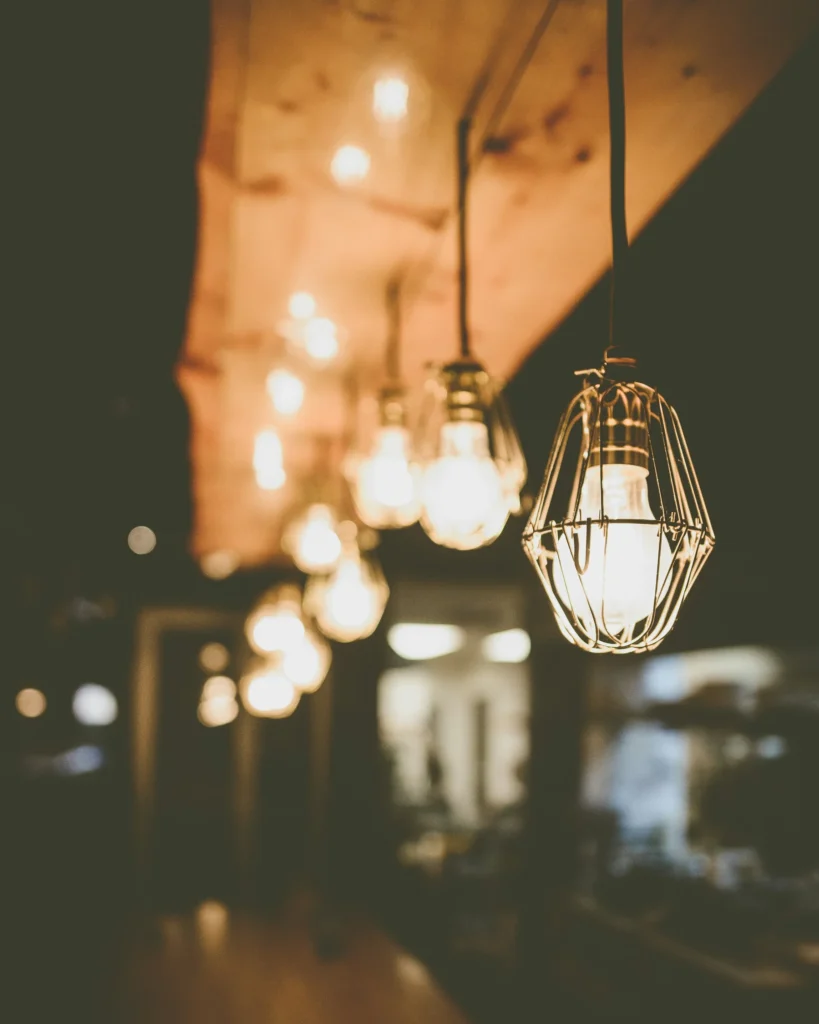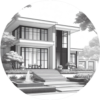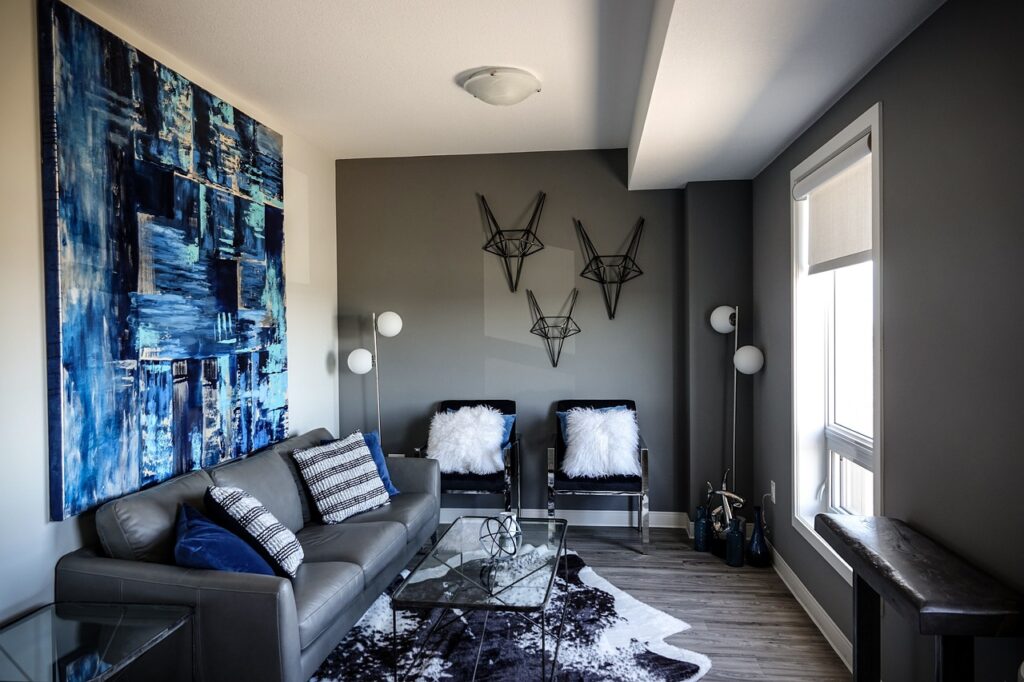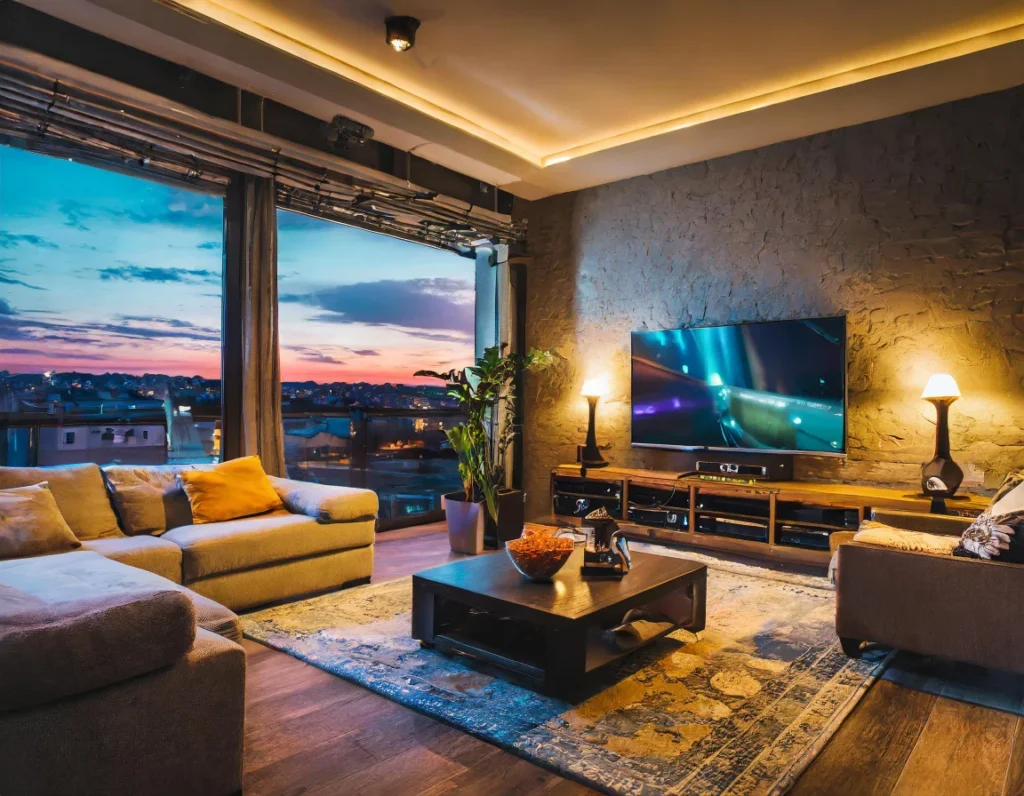Where to place recessed lighting in the living room: with its sleek and unobtrusive design, recessed lighting is a popular choice for enhancing the ambiance and functionality of living spaces. The placement of these fixtures is critical to achieving the desired lighting effect, whether it’s to brighten up a kitchen workspace or to create a cozy atmosphere in a living area. This article delves into the strategic placement of recessed lighting, offering tips to illuminate your home effectively.
Contents
- 1 Strategizing Recessed Lighting Placement
- 2 Choosing the Right Recessed Lighting
- 3 Creating Focal Points with Recessed Lights
- 4 Layering Illumination for a Cohesive Look
- 5 Understanding the Impact of Materials and Finishes
- 6 Conclusion
- 7 Frequently Asked Questions
- 7.1 How do I create a lighting plan for recessed lighting in my living space?
- 7.2 What are the best areas to install recessed lighting in a kitchen?
- 7.3 Can recessed lighting be used for both ambient and task lighting?
- 7.4 How can I use recessed lights to create a focal point in my living room?
- 7.5 What should I consider when choosing finishes and materials for recessed lighting?
- 7.6 Is recessed lighting suitable for low ceilings?
Key Takeaways
- A well-thought-out lighting plan is essential for effective recessed lighting, taking into account room function, furniture layout, and architectural features to be highlighted.
- The choice of recessed lighting size and type, including LED downlights for task lighting, should complement the overall ambient light to create a balanced illumination.
- Recessed lights can be used to create focal points in living spaces, such as accentuating a fireplace or illuminating a kitchen workspace with adjustable trims for versatile lighting.
- Layering illumination with a combination of ambient and task lighting, and integrating recessed lights with other fixtures, contributes to a cohesive look in the living space.
- The finishes and materials of recessed lighting fixtures impact both the quality of light and the decor, with maintenance and longevity also being important considerations.
Strategizing Recessed Lighting Placement

Creating a Lighting Plan
Embarking on the journey of strategizing recessed lighting placement begins with a meticulous plan. Start by sketching your ideas to visualize the placement and spacing of each light. This initial step is crucial for achieving a harmonious balance between aesthetics and functionality.
To ensure optimal illumination, consider the room’s dimensions and the height of the ceiling. A simple rule of thumb from LightUp suggests dividing the ceiling height by 2 to determine the spacing between lights, especially in bedrooms, kitchens, and living rooms.
When planning, it’s essential to account for the room’s most frequented areas. Measure spaces around key furniture pieces and note architectural features deserving of spotlighting.
Remember to distribute ambient, task, and accent lighting strategically. Each type serves distinct functions and moods, making their thoughtful arrangement pivotal for an effective layout.
Highlighting Architectural Features
Recessed lighting is a powerful tool for enhancing the unique characteristics of your living space. By strategically placing lights, you can draw attention to the most striking aspects of your home’s architecture. Consider the following points:
- Use recessed lighting to accentuate the depth and texture of walls or ceilings.
- Illuminate alcoves, niches, or columns to add drama and interest.
- Position lights to create shadows and highlights that define architectural shapes.
Recessed lighting allows for precise control over the direction and intensity of light, enabling homeowners to highlight architectural features or focal points.
Remember, the goal is to complement the natural beauty of your home without overwhelming it. Subtle lighting can bring out the best in your decor, creating an inviting and dynamic atmosphere.
Considering Room Function and Furniture Layout
When illuminating a living space, consider the room’s function and how furniture is arranged. Task areas require focused lighting, while relaxation zones benefit from softer, ambient lights.
It’s essential to adjust the height and intensity of lighting based on the room’s activities. For instance, over a reading chair, a brighter, more direct light is preferable, whereas a dimmer, widespread light creates a cozy atmosphere for socializing.
The placement of recessed lighting should not only fulfill practical needs but also enhance the room’s aesthetics, seamlessly integrating with the decor.
Remember to account for the movement of furniture and the flexibility of the space. A well-planned lighting scheme can adapt to changes, ensuring perfect illumination regardless of layout alterations.
Choosing the Right Recessed Lighting

Determining the Appropriate Size and Type
Choosing the right size and type of recessed lighting is pivotal for achieving the desired ambiance and functionality in your living space. The scale of the light should harmonize with the room’s dimensions, avoiding a mismatch that could disrupt the aesthetic balance.
Proportions matter. For instance, larger lights suit spacious areas with high ceilings, while smaller ones are ideal for cozy spaces. Here’s a simple guide to help you decide:
- Measure the room’s length and width in feet.
- Multiply those numbers to find the room’s area in square feet.
- For ambient lighting, aim for 1.5 watts per square foot.
When selecting bulbs, consider the intended use and the ambiance you wish to create. Not all fixtures are compatible with every bulb type, so choose wisely to avoid limitations.
Remember, the number of lights is just as crucial as their size. Calculate the room’s area and desired illumination level to determine the correct quantity, ensuring even light distribution and no dark spots.
LED Downlights for Task Lighting
LED downlights are a modern solution for task lighting, providing bright, focused illumination exactly where you need it. Ideal for areas requiring precision and clarity, such as kitchen countertops or home offices, these lights offer energy efficiency and longevity.
- Focused Illumination: Direct light to specific tasks or areas
- Energy Efficient: Lower power consumption than traditional bulbs
- Long-Lasting: LEDs have a longer lifespan, reducing replacement frequency
LED downlights can be dimmed to create the perfect ambiance for any activity, from cooking to reading.
When planning your lighting, consider the brightness of your decor and the wattage of the bulbs. Smart LED downlights add convenience with app or voice control, allowing for easy adjustments to suit any task. Remember, the right lighting can transform a space, enhancing both its functionality and aesthetic appeal.
Complementing Ambient Light with Recessed Options
Recessed lighting is not just about functionality; it’s about creating an atmosphere. Integrating recessed lights with other fixtures can enhance the overall ambiance of a room. For instance, pairing recessed lights with pendant lights offers a layered lighting effect that can be adjusted to suit different moods and occasions.
Ambient lighting sets the tone of a space, and recessed lights can play a supporting role by filling in the gaps. They ensure that every corner of the room is gently illuminated, avoiding harsh shadows and creating a welcoming environment.
- Use dimmable recessed lights to adjust brightness levels.
- Place recessed lights around the perimeter of the room for a soft glow.
- Combine with central fixtures for a balanced light distribution.
Recessed lighting should complement, not compete with, the main light sources. It’s about achieving the right balance between shadow and light to create a harmonious space.
Creating Focal Points with Recessed Lights

Accentuating Key Areas in Living Spaces
Define zones with lighting to create a dynamic and inviting atmosphere in your living space. Use recessed lights to highlight focal points, such as a reading nook or a piece of art, drawing the eye and adding depth to the room.
- Identify key areas where you want to draw attention.
- Position recessed lights to enhance these areas without causing glare.
- Adjust the beam angle for a focused or soft spread of light.
Recessed lighting can transform a space by emphasizing its best features and creating an inviting ambiance.
Remember to consider the interplay between aesthetics and functionality. A well-placed light not only looks good but also serves a practical purpose, enhancing the usability of the space.
Illuminating Workspaces in Kitchens
The kitchen is the heart of the home, where both culinary magic and family gatherings take place. Proper lighting is essential for tasks such as chopping, cooking, and reading recipes. Recessed lighting can be strategically placed to ensure no shadow is cast by the chef, providing a well-lit workspace.
Ambient lighting sets the mood, but when it comes to work areas, brightness is key. Consider a combination of overhead and under-cabinet lights for a layered effect that ensures functionality and aesthetic appeal.
The key to a perfect kitchen lighting setup is to balance task and ambient lighting, creating a welcoming yet practical space.
Here are some creative ideas to enhance your kitchen lighting:
- Install dimmer switches to adjust the light intensity according to the time of day or task at hand.
- Opt for LED downlights for energy efficiency and longevity.
- Use pendants or chandeliers to add a touch of elegance and complement recessed lighting.
Remember, the goal is to create a harmonious lighting environment that caters to both work and leisure.
Adjustable Trims for Versatile Lighting
Recessed lighting is not just about illumination; it’s about versatility and control. Adjustable trims allow you to direct light where it’s needed most, whether you’re highlighting a piece of art or illuminating a reading nook. With the ability to tilt and swivel, these trims offer a dynamic lighting solution that can adapt to any changes in your living space.
italics trims are particularly useful in rooms where the function may evolve over time. For example, a home office might be repurposed into a craft room, necessitating a shift in lighting focus. Here’s how to make the most of adjustable trims:
- Choose the right bulb for optimal brightness and energy efficiency.
- Install dimmer switches for mood setting and energy savings.
- Angle lights to enhance or soften room features as desired.
By strategically placing adjustable trims, you can create a lighting scheme that is both functional and aesthetically pleasing, without the need for frequent adjustments.
Layering Illumination for a Cohesive Look

Balancing Ambient and Task Lighting
Achieving harmony between ambient and task lighting is essential for creating a layered and inviting atmosphere in your living space. Ambient lighting sets the foundational brightness, while task lighting focuses on specific areas for activities like reading or cooking.
- Ambient lighting: Utilizes natural light and overhead fixtures.
- Task lighting: Concentrates on functional areas with lamps or under-cabinet lights.
Be mindful of positioning to ensure that lights serve their intended purpose without overpowering each other.
When integrating these two types of lighting, it’s crucial to maintain a balance that neither overwhelms with brightness nor leaves areas in shadow. Consistency in light color and intensity is key to a cohesive look. Remember, the goal is to complement the ambient light with task fixtures that blend seamlessly with your decor and meet your daily needs.
Integrating with Other Light Fixtures
When incorporating recessed lighting into your living space, it’s crucial to consider how these fixtures will interact with existing lights. Balance is key; recessed lights should complement, not compete with, other sources of illumination. For instance, pairing recessed lights with a statement pendant or chandelier can create a harmonious blend of direct and indirect lighting.
Dimmer switches are an excellent addition to any lighting scheme, offering the flexibility to adjust brightness to suit different activities or moods. This control over ambiance is essential for a cohesive lighting experience.
- Ensure color consistency across all light sources
- Match design elements for a unified aesthetic
- Use dimmers for adjustable ambiance
Careful placement of recessed lights in relation to other fixtures will enhance the overall lighting design, avoiding shadows and glare while providing a well-lit environment.
Sketching a Blueprint for Placement
Begin your lighting plan by sketching a detailed floor plan of your space. This blueprint should include all rooms, indicating dimensions, windows, doors, and any architectural features you’d like to highlight with recessed lights, such as a fireplace or stone wall.
Once you have determined the best placement for your needs, sketch the placement of the recessed lighting on a blueprint. At this point, you can decide on what recessed lighting size and type you would like to use.
For even placement around the room, start with the first LED light in the center and work outwards, taking into account the dimensions of the room. Remember to follow the ceiling height rule of thumb for optimal spacing.
- Measure the furniture and areas where you spend the most time.
- Note the locations that require more illumination.
- Consider the spacing of the lights to ensure even coverage.
Planning a recessed lighting layout is crucial to achieving the desired ambiance and functionality. Calculate the wattage of the bulbs you will need and plan accordingly to create a successful lighting layout.
Understanding the Impact of Materials and Finishes

Choosing Finishes to Complement Decor
When selecting finishes for recessed lighting, the goal is to complement your existing decor and create a seamless aesthetic. Metal finishes such as brass, chrome, and matte black cater to modern tastes, offering elegance, sleekness, or bold contrast respectively.
Texture plays a pivotal role in the ambiance of a room. Incorporating varied textures like rattan or textured glass can add depth and interest. Consider the following points:
- Brass adds warmth suitable for elegant settings.
- Chrome provides a polished look for a contemporary vibe.
- Matte black creates a striking contrast, ideal for modern decor.
- Natural materials like wood and rattan evoke an organic feel.
Aesthetics and functionality should harmonize to achieve a balanced and inviting living space.
Pairing fixtures with similar design elements ensures a cohesive look. Whether it’s the shape, material, or finish, consistency is key. Remember, the right finish enhances both the beauty and the functionality of your lighting.
The Role of Materials in Light Quality
Material choice is pivotal in determining the quality of light in a living space. Different materials not only affect the durability and maintenance of recessed lighting but also influence the diffusion and reflection of light. For instance, fixtures with a glass trim can create a clear, bright light, ideal for areas requiring more illumination, while metal trims can produce a more focused and directed light.
When considering materials for recessed lighting, it’s important to be aware of material restrictions. Some ceiling materials are impractical for recessed lighting installation, such as ornamented plaster or concrete. These materials can limit the types of fixtures that can be used and may require special installation techniques.
The interplay between light and material finishes can dramatically alter the ambiance of a room. Choosing the right combination can enhance the desired mood and functionality of the space.
Reflect on the following points when selecting materials for your recessed lighting:
- Aesthetics: How the material complements the room’s decor.
- Functionality: The material’s ability to provide the desired level of light.
- Maintenance: Consider the ease of cleaning and the longevity of the material.
- Compatibility: Ensure the material works well with the existing ceiling and installation requirements.
Maintenance and Longevity Considerations
Ensuring the longevity of your recessed lighting involves a balance between aesthetics and functionality. Opt for energy-efficient fixtures like modern LED lights, which are not only durable but also maintain consistent quality over time. These fixtures are a smart investment, as they minimize environmental impact and reduce costs.
Materials and finishes play a crucial role in both the appearance and the performance of your lighting. When selecting these, it’s important to stay abreast of current trends to ensure your choices are both stylish and suitable for long-term use. Remember, the right materials can significantly affect light quality and maintenance needs.
Regular maintenance is key to preserving the condition of your lighting fixtures. Dusting regularly with a soft cloth or feather duster can prevent the accumulation of dirt and debris, which can detract from both the light’s quality and its aesthetic appeal.
By considering these factors, you can enjoy beautiful, functional lighting that stands the test of time.
Conclusion
In conclusion, the strategic placement of recessed lighting can transform your living space by enhancing both functionality and aesthetic appeal. By carefully planning your lighting layout, choosing focal points, and considering the specific tasks and architectural features of your space, you can achieve the ideal level of brightness and ambiance.
Whether you’re illuminating a cozy reading nook or showcasing a stunning fireplace, recessed lighting offers a sleek, modern solution that integrates seamlessly into any design scheme. Remember to measure your space, sketch your plans, and select the appropriate size and type of recessed lights to ensure a harmonious and well-lit environment. With these tips in mind, you’re well on your way to creating a beautifully lit home that caters to both your practical needs and your personal style.
Frequently Asked Questions
How do I create a lighting plan for recessed lighting in my living space?
Start by measuring the areas where you spend the most time, such as near the coffee table or bookshelf, to understand where additional light is needed. Consider highlighting architectural features like fireplaces or stone walls. Sketch the placement on a blueprint, including the size and type of recessed lighting you prefer.
What are the best areas to install recessed lighting in a kitchen?
Recessed lighting should provide ample task lighting in a kitchen. Install LED downlights directly above the stovetop, sink, and main food prep areas to ensure these workspaces are well-lit.
Can recessed lighting be used for both ambient and task lighting?
Yes, recessed lighting can provide targeted illumination for specific tasks while also contributing to the overall ambient light in a room. It can be complemented with other light fixtures like pendant lights or track lighting for a flexible and well-lit space.
How can I use recessed lights to create a focal point in my living room?
To focus light on a specific area, such as a reading chair or fireplace, center the first recessed light exactly where you want it and space the rest accordingly. Adjustable trims like gimbal recessed lighting can direct accent lighting onto mantels or artwork.
What should I consider when choosing finishes and materials for recessed lighting?
Choose finishes that complement your decor and consider the quality of light each material provides. Also, think about maintenance and longevity, as some materials and finishes may require more upkeep than others.
Is recessed lighting suitable for low ceilings?
Yes, recessed lighting is a practical choice for living rooms with low ceilings because it’s installed directly into the ceiling, offering a clean and minimalist appearance without taking up extra space.


